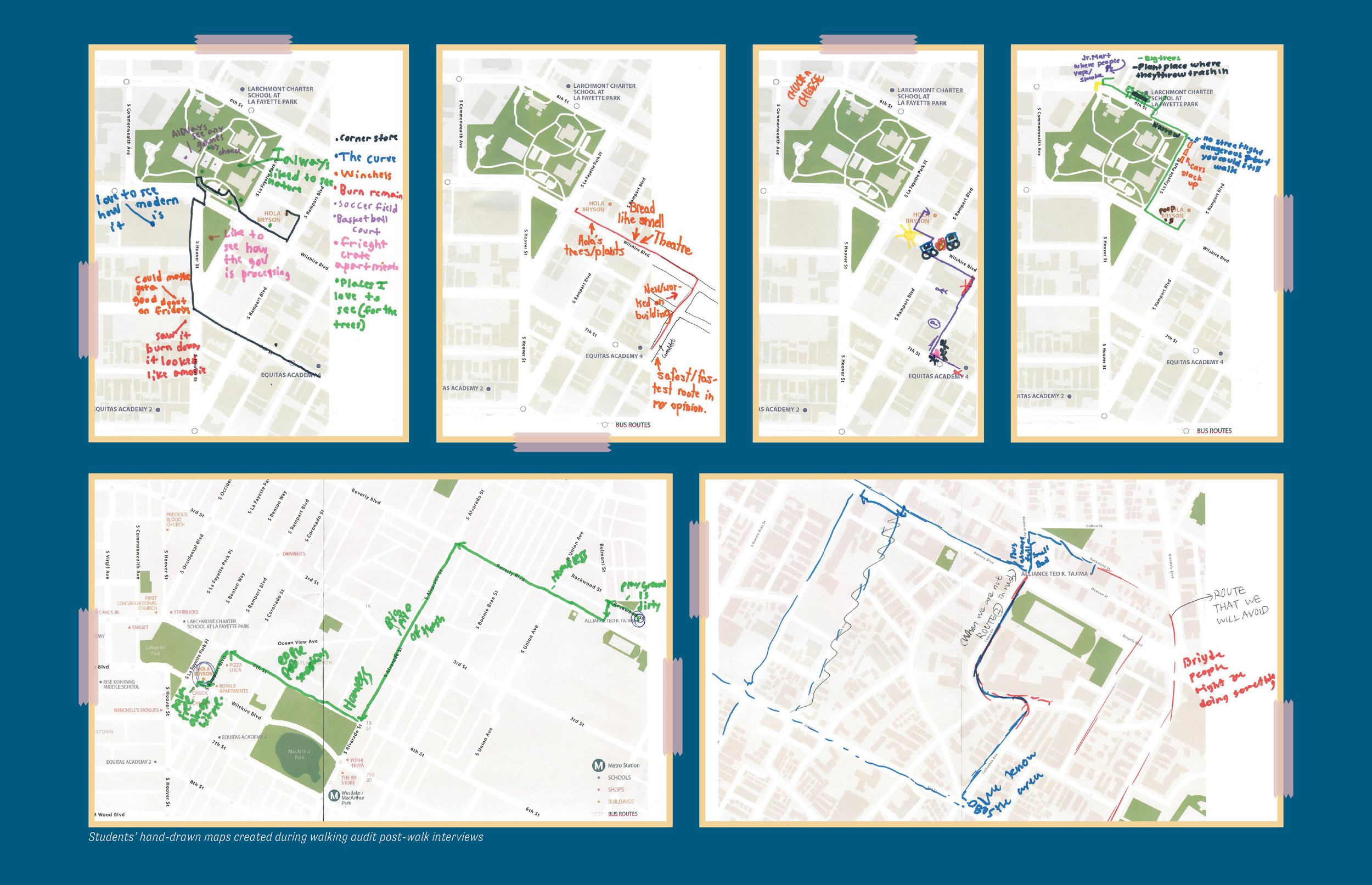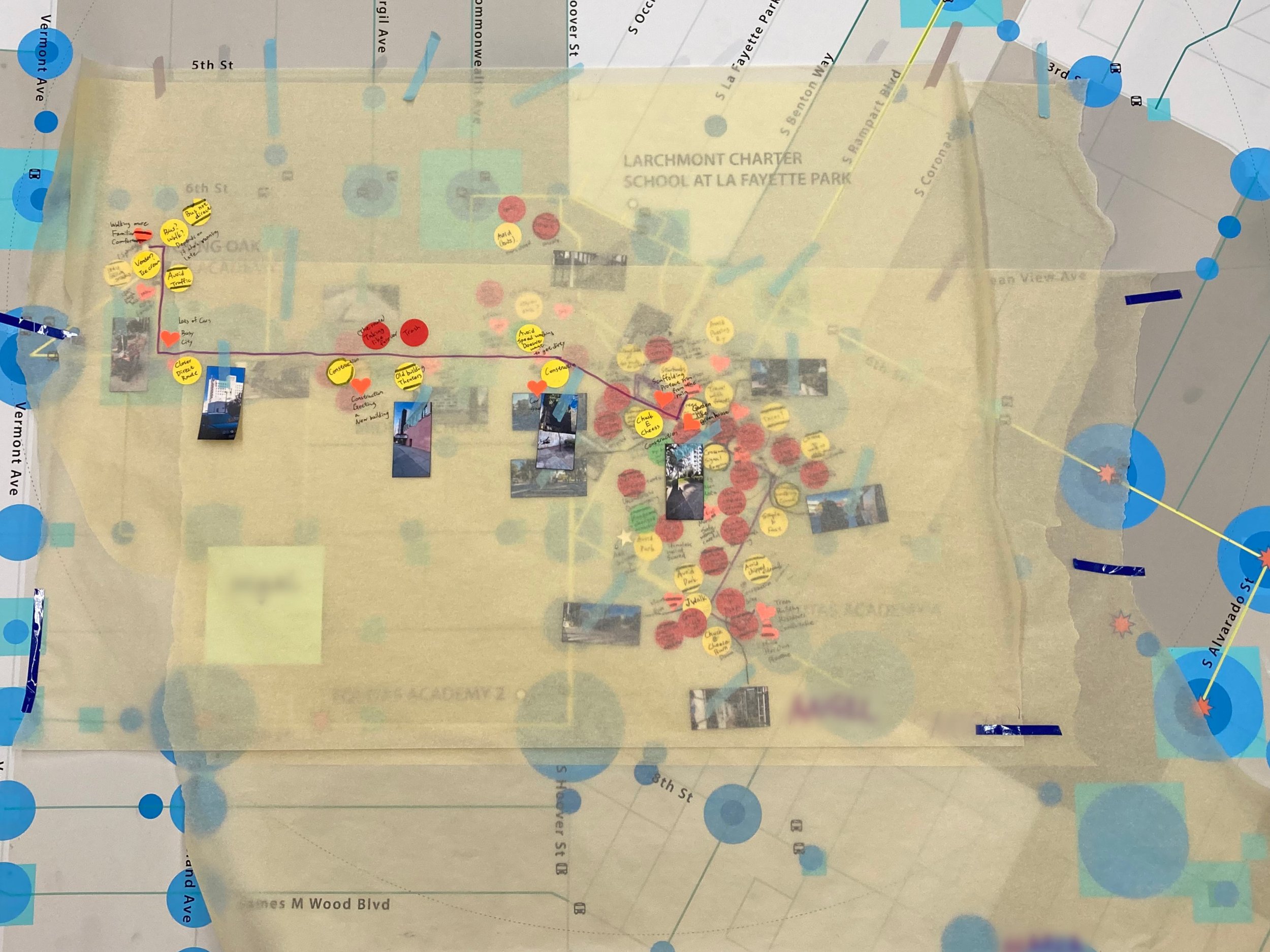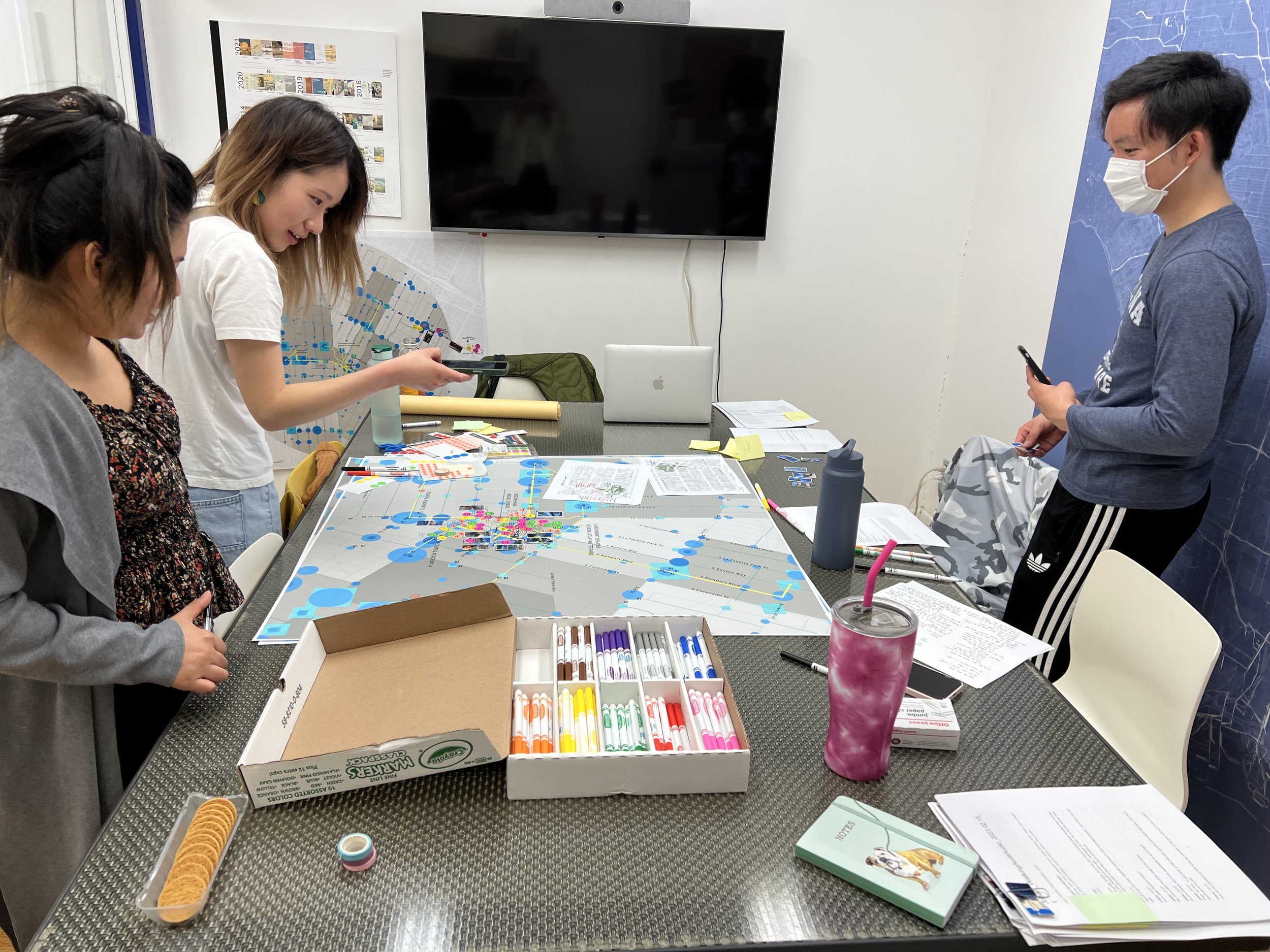Pathways to Autonomy


Year: 2022-2023
Youths’ independent travels through the city represent important pathways to autonomy, agency, and urban citizenship, which a city can support with safe, pleasant paths that offer reassuring familiarity and opportunities for socializing. To deepen understanding and inform the kinds of improvements we can make along streets and sidewalks, this study examines the experiences of late elementary, middle, and early high school students as they travel independently from school to after-school activities in Westlake, Los Angeles.
This study uses the concept of “sidewalk ecologies" to highlight the complex interaction between spatially situated social and material features of sidewalks that influence youth mobility. We use a range of interdisciplinary strategies, emphasizing youth-centered research methods and mapping to capture a rich portrait of the independent travel experiences, perceptions, and ideas of youth, in their own voices. This research was conducted in partnership with Heart of Los Angeles (HOLA), a community-based organization in Westlake that provides after-school programming to thousands of neighborhood youth.
Our findings bolster our understanding of sidewalks as complex, sociospatial environments for youth, and offer insights for future-oriented design and programmatic interventions to support safe and enjoyable independent travel for youth in Westlake and beyond. Drawing on these findings, the study presents propositions for planners, designers, and advocates invested in enhancing youth independent mobility.
Credit
Claire Nelischer, Dana Cuff, Anastasia Loukaitou-Sideris, Sandra Ren Shan Chen, Jane Wu, Emmanuel Proussaloglou, Monserrat Acosta Gomez, Marylyn Carrillo, Don Leung
Partners
Heart of Los Angeles (HOLA), Los Angeles Department of Transportation (LADOT)








